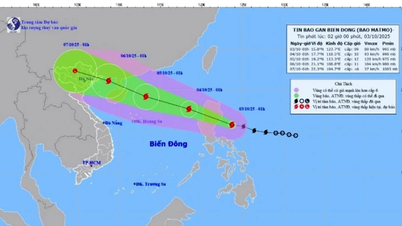The Guardian, citing information from an international survey due to be published next weekend, revealed that 57% of senior disease experts now believe a strain of influenza virus will be the cause of the next deadly global infectious disease outbreak.
Jon Salmanton-García, who conducted the research at the University of Cologne, confirmed the belief that influenza is the world's biggest pandemic threat based on long-term research showing it is constantly evolving and mutating.

An artist paints a mural during the Covid-19 pandemic in Manchester. Some scientists believe Sars-Cov-2 is still a threat.
Details of the survey – which included input from a total of 187 senior scientists – will be revealed at the European Society for Clinical Microbiology and Infectious Diseases (ESCMID) conference in Barcelona next weekend.
According to 21% of the experts who participated in the study, the likely cause of the next pandemic, after influenza, could be a virus – dubbed Disease X – that is still unknown to science. Experts believe that the next pandemic will be caused by an unidentified microorganism that emerges suddenly, just as the Sars-CoV-2 virus, the cause of Covid-19, was when it began infecting humans in 2019.
To this day, some scientists still believe that Sars-CoV-2 remains a threat, with 15% of scientists surveyed in the study rating it as the most likely cause of a pandemic in the near future.
Other deadly microorganisms – such as Lassa, Nipah, Ebola and the Coronavirus – were rated as a serious global threat by only 1% to 2% of respondents. “Influenza remains very much alive and well as the number one pandemic threat in the eyes of the majority of scientists worldwide,” Salmanton-García added.
Last week, the World Health Organization (WHO) raised concerns about the alarming spread of the H5N1 strain of bird flu that is causing millions of cases of bird flu globally. The outbreak began in 2020 and has led to the death or culling of tens of millions of poultry and the destruction of millions of wild birds.
Most recently, the virus has spread to mammals, including livestock, and has now infected 12 US states, raising further concerns about the risk to humans.
The more mammals the virus infects, the more likely it is to evolve into a strain dangerous to humans, expert Daniel Goldhill, of the Royal Veterinary College in Hatfield, told Nature magazine last week.
The emergence of H5N1 in cattle was a surprise, added virologist Ed Hutchinson, of the University of Glasgow. “Pigs can get bird flu but cattle haven’t until recently, so the emergence of H5N1 in cattle has been a shock.”
So far, there is no evidence that H5N1 can be transmitted from person to person. However, in the hundreds of cases where people have been infected through contact with animals over the past 20 years, the consequences have been devastating. “The mortality rate is extremely high because people have no natural immunity to the virus,” said Jeremy Farrar, chief scientist at the World Health Organization.
Source





































![[Photo] Binh Trieu 1 Bridge has been completed, raised by 1.1m, and will open to traffic at the end of November.](https://vphoto.vietnam.vn/thumb/1200x675/vietnam/resource/IMAGE/2025/10/2/a6549e2a3b5848a1ba76a1ded6141fae)

































































Comment (0)